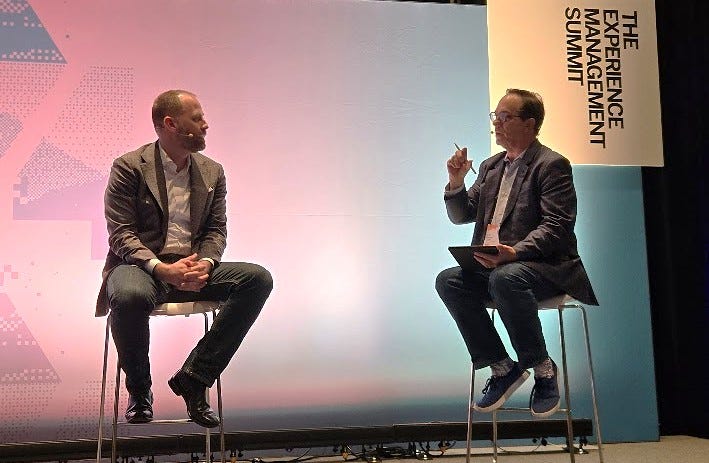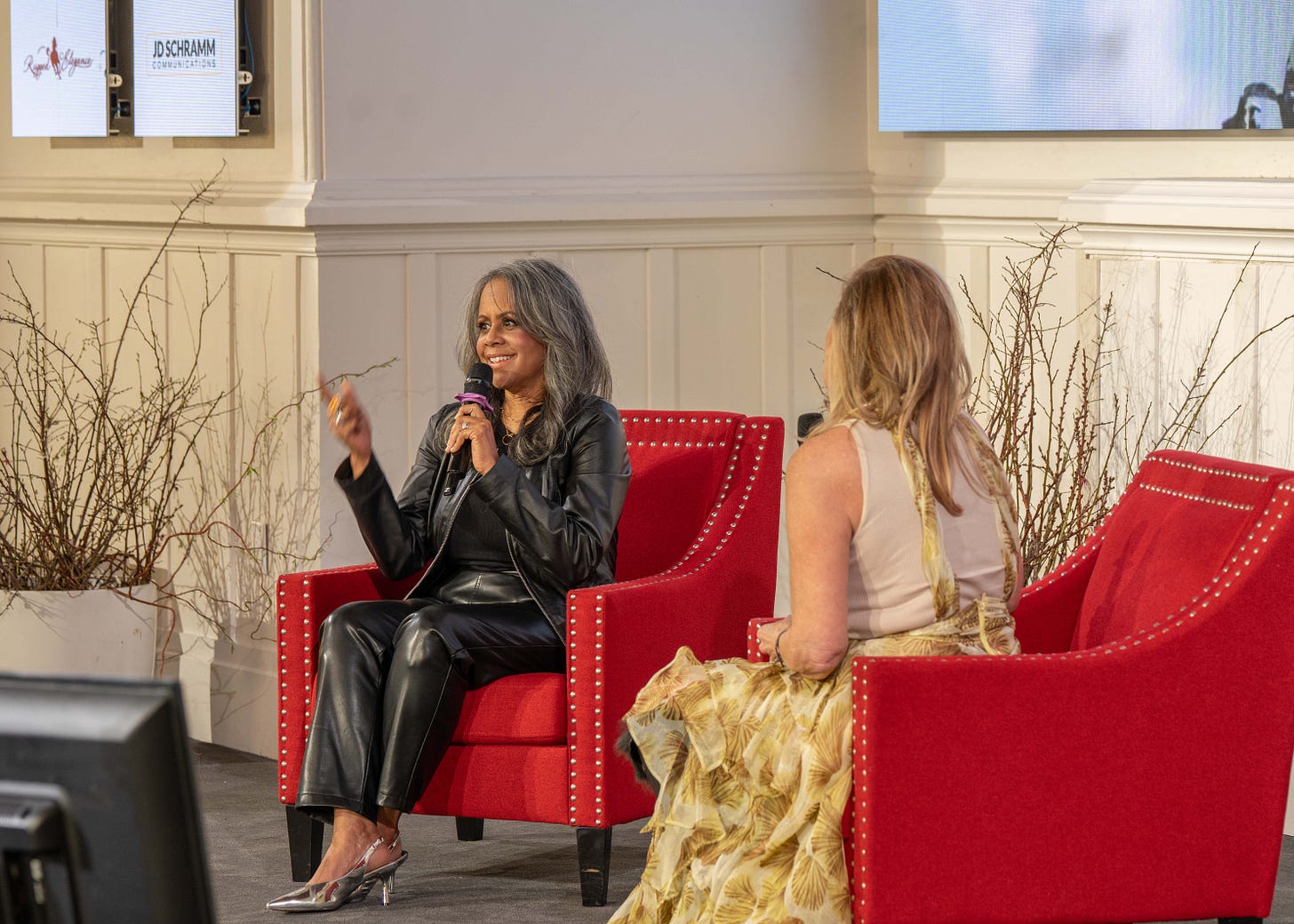
This past week I had the privilege of conducting two fireside chats with tech leaders at the annual Qualtrics X4 Summit. On Wednesday, I sat down with Michael Ramlet, founder of Morning Consult, to discuss Influencing Decisions Through Storytelling. The very next day, I chatted with Google’s Santhosh Srinivasan about Turning Data into Strategy and Design Decisions. Several hundred people “overheard” our conversation; many people came up to me and complimented how I handled the two chats. I realized this would make a great post on Communication Matters to synthesize the skills I teach and use for creating effective fireside chats.
My work on this skill began years ago when I coached many of the Stanford MBA students for View From the Top, a speaker series where leaders come to campus to share insights on leadership from their vantage point. I prepared students to interview Oprah, Mitt Romney, Magic Johnson and countless others. Then, I got to sit back and enjoy the conversations they created. Since then, I’ve honed and crafted the list, coming up with seven strategies for fireside chat success.
1.) Do your homework. Once you’re matched with a speaker for this kind of conversation, it’s time to learn all you can about their story and style. Watching interviews of the guest conducted by others may help you see the direction you hope to take. One of my clients prepared to interview the renowned tech journalist Kara Swisher by picking and choosing some of the best questions she’d seen others use, then creating some of her own. We even did a “mock” fireside chat in my living room, in front of my fireplace, with a colleague playing the role of the feisty Swisher to make it feel real.
2.) Create a plan but not a script. Outline your questions. Think of a narrative arc to the chat and major topic areas that you hope to cover. This may go from broad to specific, or past to future, or some other construct you prefer. Don’t view this as simply a series of questions but rather a storyboard for the chat you hope to have.
3.) Connect with the speaker. Depending on their availability, you may plan a Zoom call in advance or simply meet them a few minutes before the chat. Whatever time you are able to get, seize it. The more rapport and connection that you can build in advance, the greater connection that will come through within the chat.
Unless they demand it, Don’t share the full set of questions, just the landscape of topics you hope to cover.
This last idea might seem counterintuitive for some, but the conversation can fall flat if you send a prescribed set of questions upfront and they prepare canned answers just to those questions. It is important to know if any topics are “out of bounds.” Ensure the guest that your whole goal is to provide them with a great platform and a warm conversation; it’s not intended to be an interrogation but a conversation.
4.) Be flexible – As the great military strategist Dwight Eisenhower famously said, “Plans are useless but planning is everything.” The true value of the plan you created in Steps One to Three is in the power of letting it go in Step Four and just having a great conversation. Stay within the boundaries you agreed with your guest, but go where you feel the greatest value can be derived for you, the guest, and the audience. The quality of spontaneity is something you can plan for, as I discussed back in November. For instance, it’s possible that something in that day’s news may trigger an unexpected but insightful element for the conversation.

5.) Display great presence. Since you are seated, it will be all the more important that you compensate with strong non-verbal skills. Strive to balance eye contact with the guest and the audience. I suggest at least once directly talking to the audience furthest to your right of you, then and furthest to your left, the edges of the front row of the audience that are often ignored. Keep your back firm, just off the back of the chair (as both speakers above are doing), with your chest slightly forward. Use simple gestures to emphasize points you wish to make.
6.) Be the bridge between the guest and the room. Often, as in the VFTT example above, you may be part of the group that invited the guest. You want to bring them to the guest, and the guest to them. That may involve explaining inside language or providing context the guest would not know. “Last week we welcomed your friend Molly Epstein to this very stage, where she suggested…” can bring a level of warmth and context to the chat you are having.
7.) Have fun. It all comes down to this. If you enjoy the conversation, so will your guest and in turn, the audience. A decade ago, I had a total blast interviewing the tech luminary Steve Blank at a meet-up event for alumni of the Stanford GSB Ignite program. We both had so much fun on stage that night that we’ve found several more chances to reprise our relationship.
I often ask you to try these skills in the week ahead, but instead, this week, I invite you to seek out some great fireside chats online and see how these skills show up, or don’t, in the chats you watch. I’ve linked to many talks here, and you can find more on the View From the Top YouTube archive. Or simply google “fireside chat” and your favorite luminary. You may strike gold (or not), but let me know what you find.
Talk of the week
Just for fun, as we near the start of the TED conference in Vancouver next month, I wanted to remind you of Sebastian Wernicke’s 2010 talk: Lies, Damned Lies and Statistics. While his statistics may be fifteen years old, his insights are timeless. Wishing all my clients headed to the TED stage, or dreaming about someday going there, the very best during TED season.
JD’s Recommendations: What I’m reading, hearing, and seeing:
Reading: Wes Cao stridently replies, “No, I don’t want to hop on a call,” when the writer is too lazy to write a cogent message.
Hearing: Dr. Pam King held a powerfully insightful conversation with USC’s Dean of Religious Life, Dr. Varun Soni on her podcast With & For, one of my newest “never-miss” podcasts.
Viewing: In my prep for today, I found Scott Kirsner’s video: 5 Tips to Moderating a Fantastic Fireside Chat, a helpful resource.
As we move out of March and into April may the signs of Spring bring you great joy.
Until next time…jds







These are also really useful tips for hosting guests on podcasts. Thanks JD.
Love this piece JD!